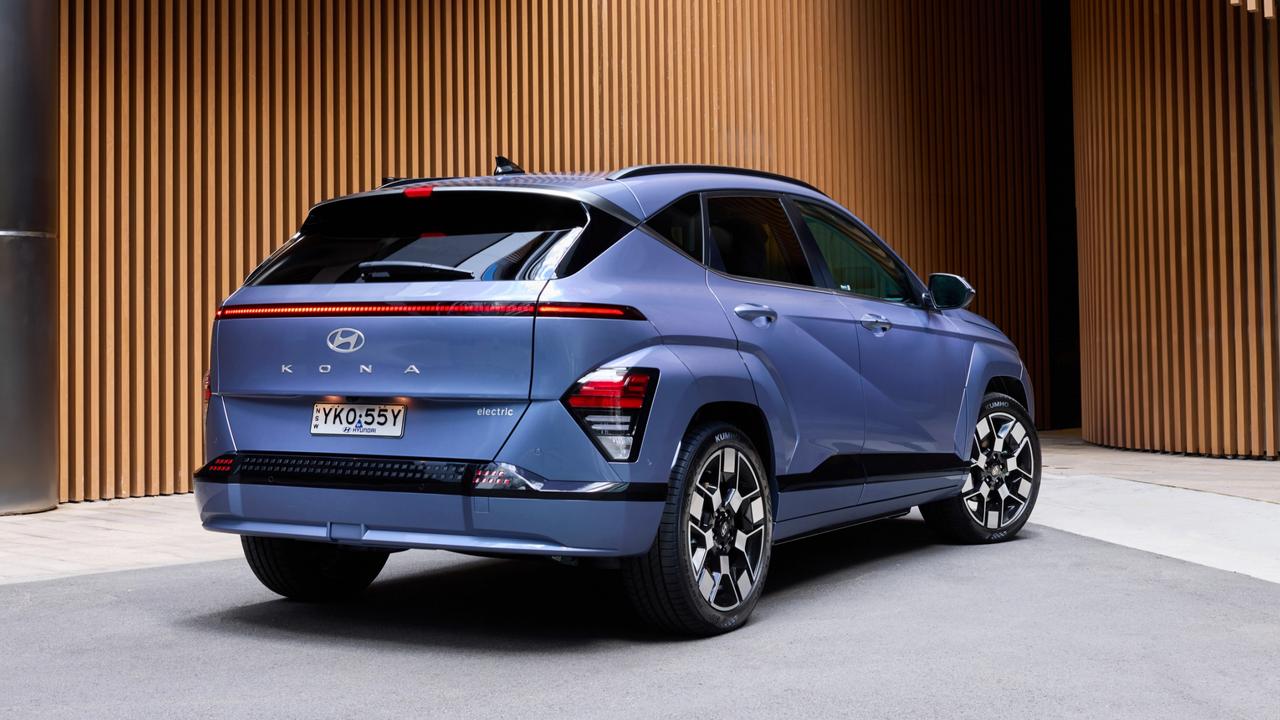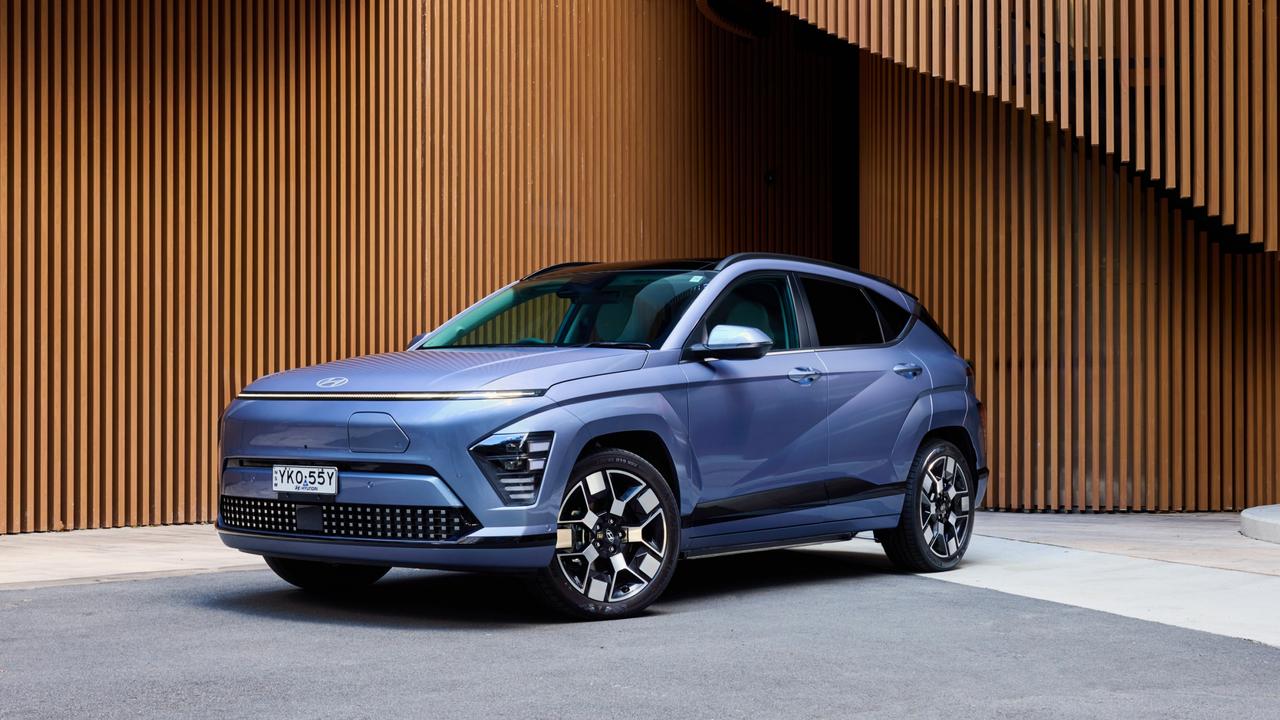Why the Hyundai Kona is for everyone
An all-new version of one of the best selling SUVs in the country is sure to please buyers as auto giant feels the pressure from new rivals.

Motoring News
Don't miss out on the headlines from Motoring News. Followed categories will be added to My News.
Hyundai’s second-generation Kona Electric compact SUV arrives with a price designed to please.
The brand has shaved $500 off the asking price for the cheapest model in the range, despite the fact it is bigger, has more equipment and can travel further between charges.
At about $58,900 drive-away, the EV is still not cheap when compared with petrol and hybrid versions, though.

To compensate, it now has a 48.6kWh battery (up from 39.2kWh) that is good for 370km of claimed range (up from 305km).
There’s less grunt, though, as the entry level car has just 99kW of power and 255Nm of torque, down 140Nm on its predecessor.
Less grunt isn’t usually a great sales pitch, but Hyundai says the focus is on extending the range and improving driveability.

That standard model now has smartphone connectivity that allows remote locking and unlocking, activation of the airconditioning and charging. There are also 17-inch alloys, dual 12.3-inch screens, wireless phone charging, smart-key entry and a vehicle-to-load function that allows any 230-volt household appliance to be powered by the car.
Those who want more can shell out another $4100 for the Extended Range model, which has a 64.8kWh battery with 505km of range. Power also jumps to 150kW, although torque is unchanged.
That Extended Range is also available in Premium trim for about $73,500, which is a few grand more than the most affordable version of the larger Hyundai Ioniq 5.

The Premium adds a 360-degree camera, a head-up display, leather, ambient lighting, powered front seats with heating and ventilation, a sunroof and an eight-speaker Bose sound system. There are also 19-inch wheels that drop the range to 444km.
Driving the front wheels with a single electric motor, the standard Kona EV is still not short on thrust, although it lacks the enthusiasm of its predecessor.
The trade-off is better usability. Whereas the previous version would chirp the front tyres and trigger the traction control if you were too enthusiastic with the throttle, the new one is more drivable.
It’s also well behaved and comfortable over bumps. While the steering isn’t particularly sharp, it’s consistent and well weighted, adding to the everyday liveability.

We only tested the Extended Range with its 150kW of power that makes for zippy acceleration. Despite a big backwards step on torque there’s ample performance for urban driving.
Drivers can expect less than the claimed 505km in real-world conditions, but there’s still enough battery capacity to deliver more than 450 kilometres between charges.
Charging takes about seven hours on a home wallbox for the Standard Range and 9.5 hours for the Extended Range. Faster DC charging takes about 45 minutes to get from 10 to 80 per cent for the Standard Range and 65 minutes for the Extended.
Unlike the Ioniq 5 and 6, the Kona shares its underpinnings with models that also run on petrol power. Hyundai insists, however, that the EV was the priority and set the template for the other vehicles in the range.

That could explain how Hyundai managed to make the floor in the back flat, in turn maximising foot space. It also matches other Kona variants for boot capacity, with a generous 407 litres.
While there’s no shortage of grey plastics, the cabin has a modern flavour, including four dots on the steering wheel instead of the Hyundai logo (they denote H in morse code).
Hyundai has also kept plenty of physical buttons for major controls such as ventilation and audio, making it easy to operate things on the fly. There’s generous storage space, too, in part because the gear selector is a twist stalk hanging off the steering wheel.
There’s even a spare wheel – albeit a space saver – which is almost unheard of in electric vehicles.

Ultimately the biggest challenge facing the Hyundai Kona Electric is its impressive rivals, which include the Chinese-built BYD Atto 3 and the Kia Niro, which shares its electrical underpinnings with the Hyundai.
In its favour, though is its long driving range, practical body and good driving manners.
VERDICT
Three and a half stars
Less power but added polish makes for a slick compact electric SUV with generous driving range.
Hyundai Kona Electric Extended Range
PRICE: From about $63,100 drive-away
WARRANTY/SERVICING: Five yrs/unlimited km, $1560 for 6 yrs/90,000km
SAFETY: Seven airbags, auto emergency braking, lane-keep assist, blind-spot monitor, speed-limit recognition, rear cross-traffic alert, safe exit warning
POWER: Single electric motor, 150kW/255Nm
RANGE: 505km
SPARE: Space-saver
BOOT: 407 litres
Originally published as Why the Hyundai Kona is for everyone






